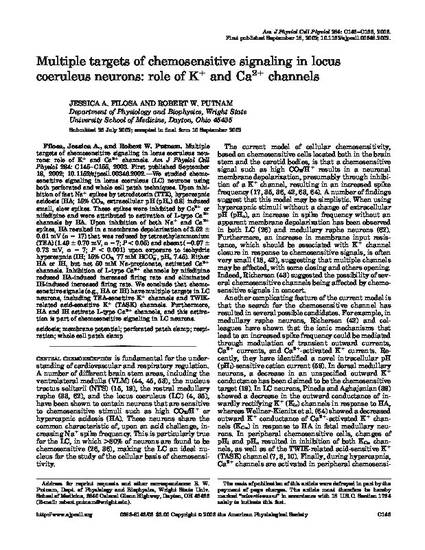
We studied chemosensitive signaling in locus coeruleus (LC) neurons using both perforated and whole cell patch techniques. Upon inhibition of fast Na+ spikes by tetrodotoxin (TTX), hypercapnic acidosis [HA; 15% CO2, extracellular pH (pHo) 6.8] induced small, slow spikes. These spikes were inhibited by Co2+ or nifedipine and were attributed to activation of L-type Ca2+ channels by HA. Upon inhibition of both Na+ and Ca2+ spikes, HA resulted in a membrane depolarization of 3.52 ± 0.61 mV (n = 17) that was reduced by tetraethylammonium (TEA) (1.49 ± 0.70 mV,n = 7; P < 0.05) and absent (−0.97 ± 0.73 mV, n = 7; P < 0.001) upon exposure to isohydric hypercapnia (IH; 15% CO2, 77 mM HCO , pHo 7.45). Either HA or IH, but not 50 mM Na-propionate, activated Ca2+ channels. Inhibition of L-type Ca2+channels by nifedipine reduced HA-induced increased firing rate and eliminated IH-induced increased firing rate. We conclude that chemosensitive signals (e.g., HA or IH) have multiple targets in LC neurons, including TEA-sensitive K+ channels and TWIK-related acid-sensitive K+ (TASK) channels. Furthermore, HA and IH activate L-type Ca2+ channels, and this activation is part of chemosensitive signaling in LC neurons.
Available at: http://works.bepress.com/robert_putnam/42/
